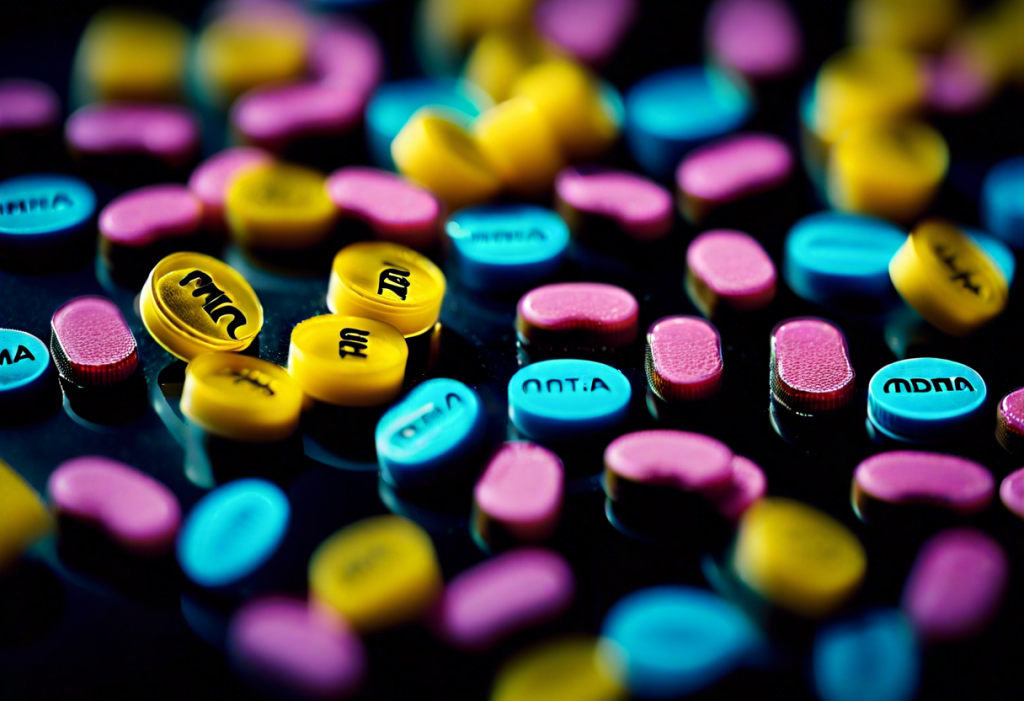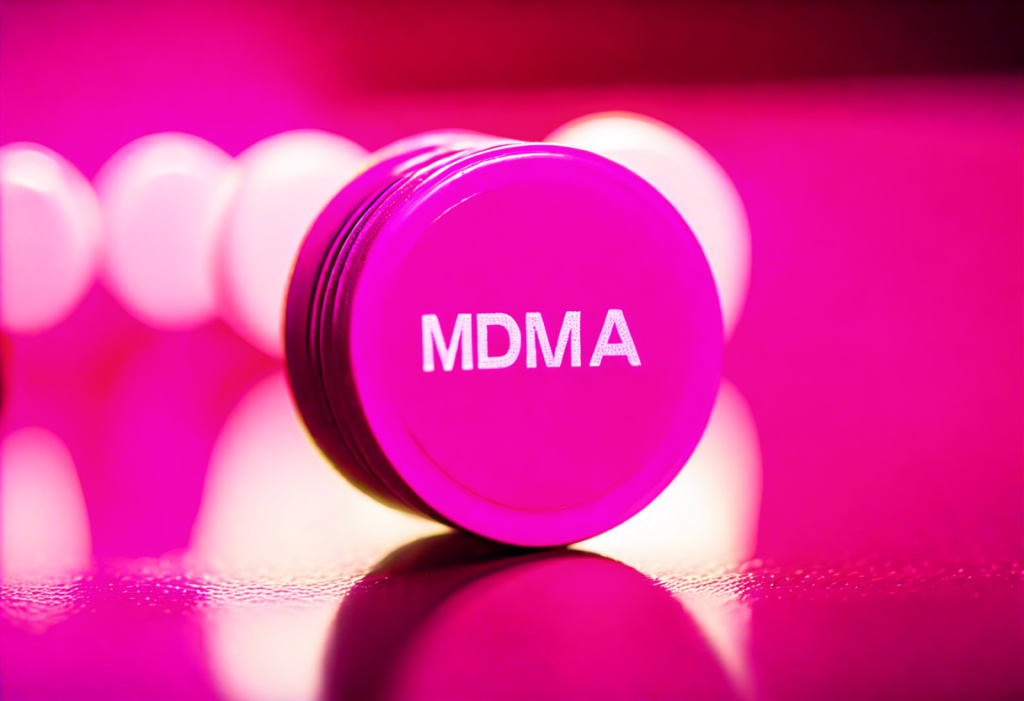How Many Doses Can You Expect from a Gram of Molly?
When it comes to the recreational use of MDMA, commonly known as Molly, one of the most frequently asked questions is: "How many doses can you expect from a gram of Molly?" The answer to this question is not straightforward, as the number of doses can vary depending on several factors. In this article, we will explore these factors and provide some guidelines to help you understand the potency and dosage of MDMA.
The potency of MDMA, or Molly, can vary from one batch to another. MDMA is often produced in an illegal and unregulated market, which means that the contents and purity of a gram of Molly can differ significantly. In some cases, a gram of Molly may contain higher levels of MDMA, while in others, it may be adulterated with other substances or fillers. This inconsistency in potency directly affects the number of doses one can expect from a gram of Molly.
Another factor that influences the number of doses is the desired intensity of the experience. Some individuals prefer a more moderate experience, while others seek a stronger effect. The dosage of MDMA can range from 80 to 200 milligrams per dose, with most recreational users commonly consuming between 100 and 150 milligrams. Based on these average dosages, a gram of Molly could provide anywhere from five to ten doses. However, it is essential to note that exceeding the recommended dosage can significantly increase the risk of negative side effects and potential harm.
Additionally, individual tolerance plays a significant role in determining the number of doses. Each person’s metabolism processes drugs differently, and factors such as body weight, overall health, and previous MDMA use can influence the way the drug affects an individual. Some individuals may require smaller doses to achieve the desired effect, while others may need higher doses. It is crucial to start with a low dose and gradually increase if needed, in order to minimize the risks associated with MDMA use.
To ensure accurate measurements and dosage, it is essential to use a reliable and precise scale specifically designed for weighing substances in milligrams. Eyeballing or estimating doses can lead to dangerous miscalculations and potential overdoses. It is also important to store MDMA in a cool, dry place to maintain its potency and reduce the risk of degradation.
The number of doses one can expect from a gram of Molly can vary depending on multiple factors, including the potency of the MDMA, the desired intensity of the experience, and individual tolerance. It is crucial to approach MDMA use responsibly, following safe dosage guidelines and taking into consideration personal factors. Remember, a gram of Molly can provide between five to ten doses, but the aim should always be to prioritize safety and minimize risks associated with drug use.
Understanding the Potency of MDMA
MDMA, commonly known as Molly or Ecstasy, is a psychoactive drug that belongs to the amphetamine class. It is renowned for its euphoric and empathogenic effects, making it a popular choice among recreational drug users. To ensure a safe and enjoyable experience, it’s crucial to have a clear understanding of the drug’s potency and the number of doses that can be derived from a gram of Molly.
The potency of MDMA can vary widely depending on various factors, including its purity level, the manufacturing process, and the presence of adulterants. A gram of Molly typically contains 1000 milligrams (mg) of the drug. However, it’s important to note that not all of the substance is pure MDMA. In fact, many street samples are found to be diluted or adulterated with other substances, such as caffeine, amphetamines, or even dangerous adulterants like bath salts. These impurities can significantly affect the overall potency of the drug.
Considering the average purity levels of street-grade MDMA, a gram of Molly can be expected to yield around 5 to 10 doses. However, it’s essential to emphasize that individual doses can vary depending on a person’s tolerance, body weight, and sensitivity to the drug. The recommended standard dose of MDMA is around 75 to 125 mg, and users are advised to start with a lower dosage to gauge their reaction and tolerance levels before increasing it.
Factors that influence the potency and the number of doses in a gram of Molly include the purity of the MDMA, the user’s body weight, metabolism, and the mode of administration. While the majority of recreational users consume MDMA orally in the form of tablets or capsules, some users may choose to crush the crystals or powder into smaller doses.
It’s crucial to note that consuming higher doses of MDMA does not necessarily enhance the desired effects and can even increase the risk of adverse effects. Excessive dosage can lead to intense physical and psychological responses, including heightened heart rate, elevated blood pressure, hallucinations, anxiety, and even potentially life-threatening conditions. Therefore, it is strongly recommended to adhere to safe dosage guidelines and exercise caution when using MDMA.
To accurately measure doses of MDMA, a reliable milligram scale is essential. Eyeballing or estimating doses can be highly dangerous and can easily lead to overdosing. It’s important to handle the substance with care, wear gloves if necessary, and use a proper scale to measure the desired dosage. This ensures that each dose is precise and reduces the risk of any unintentional harm that could arise from inaccurate measurements.
Understanding the potency of MDMA and the number of doses that can be obtained from a gram of Molly is vital for safe and responsible use. With the wide variability in purity levels and the potential presence of adulterants, it’s crucial to exercise caution and adhere to recommended dosage guidelines. Accurately measuring doses using a milligram scale is essential to ensure a controlled and enjoyable experience while minimizing the risks associated with MDMA use.
Factors Affecting the Number of Doses in a Gram of Molly
When it comes to the recreational use of MDMA, a commonly asked question is how many doses can one expect from a gram of Molly. The answer to this question is influenced by several factors that determine the potency and dosage of MDMA. Let’s explore these factors in more detail.
Purity and Quality: The purity and quality of the MDMA in a gram of Molly are vital factors that affect the number of doses. MDMA is often cut with other substances or diluted, which can lower its purity and potency. If the Molly is of high quality and purity, you will likely need a smaller dosage compared to a less pure product.
Weight of the Dose: MDMA is typically sold in tablets or capsules, with each dose weighing around 100-150 milligrams (mg). If you have a gram of Molly, it means you have 1000 milligrams of MDMA. By dividing this amount by the weight of each dose, you can estimate the number of doses. For example, if each dose weighs 100 mg, you can expect approximately 10 doses from a gram of Molly.
Tolerance and Sensitivity: Individual tolerance and sensitivity to MDMA can vary significantly. Regular users may have developed a higher tolerance, requiring a higher dose to achieve the desired effects. On the other hand, first-time users or individuals with lower sensitivity may find lower doses sufficient. It’s important to start with a lower dose and gradually increase if necessary, while always keeping safety in mind.
Redosing: Some individuals choose to redose during their MDMA experience to prolong the effects. However, redosing too frequently can lead to increased tolerance and potential risks. If you plan on redosing, it’s important to consider that this will impact the number of doses you can expect from a gram of Molly.
Preparation and Storage: Proper preparation and storage of MDMA can prevent degradation and ensure its potency. Exposure to heat, moisture, and light can accelerate the breakdown of MDMA molecules, reducing its effectiveness. By storing your Molly in a cool, dry, and dark place, you can help maintain its potency over time.
The number of doses you can expect from a gram of Molly depends on various factors such as the purity of the MDMA, the weight of each dose, individual tolerance and sensitivity, the decision to redose, and proper preparation and storage. It’s crucial to prioritize safety, start with a lower dosage, and be aware of your own body’s response to MDMA. Always remember to stay hydrated, take breaks, and practice harm reduction strategies when engaging in recreational MDMA use.
Safe Dosage Guidelines for Recreational MDMA Use
Recreational use of MDMA, also known as Molly or ecstasy, can provide a euphoric and heightened sensory experience. However, it is important to prioritize safety when using this substance. Understanding safe dosage guidelines is crucial to minimize potential risks associated with MDMA use.
What is a Safe Dose of MDMA?
The recommended safe dose of MDMA varies depending on several factors, including an individual’s body weight, tolerance, and previous experience with the drug. Generally, a typical recreational dose of MDMA ranges between 75 to 125 milligrams (mg).
It is important to note that purity levels can vary significantly among different sources of MDMA. Therefore, it is advisable to start with a lower dose, especially when using a new batch or source for the first time. This allows you to gauge its potency and assess the effects before considering higher doses.
Potency and Purity
The potency of MDMA can vary, and it is difficult to determine exact dosage information for every gram of Molly. The purity levels of MDMA found on the market can fluctuate, as it is often adulterated or mixed with other substances. This can further impact the number of doses you can expect from a gram of Molly.
To ensure your safety, it is advisable to acquire MDMA from reputable sources and test its purity using drug testing kits. This can provide you with a better understanding of the substance’s strength and allow for more accurate dosage calculations.
Factors Affecting Dosage
Several factors influence the number of doses that can be derived from a gram of Molly:
- Body Weight: Individuals with higher body weights may require slightly higher doses to experience the desired effects.
- Tolerance: Regular users of MDMA may develop a tolerance to the substance over time, requiring higher doses to achieve the desired effects.
- Metabolism: Variations in metabolism can impact how quickly MDMA is broken down in the body, potentially affecting the duration and intensity of its effects.
It is crucial to take these factors into consideration when determining an appropriate dose of MDMA to ensure your safety and well-being.
Measuring MDMA Doses
Accurate measurement of MDMA doses is essential to prevent potential overdose or negative side effects. Although Molly typically comes in powder form, it is advisable to use a milligram scale for precise measurement.
When measuring your desired dose, it is important to handle the substance with care and avoid touching it directly with your hands. Using a small scoop or folded paper can help prevent unintentional contamination of the MDMA powder.
Remember to start with a lower dose initially, especially if you are uncertain about the potency or purity of the MDMA. Taking breaks between doses can also help reduce the risks associated with multiple doses within a short period.
By adhering to safe dosage guidelines and practicing harm reduction strategies, you can enhance your recreational MDMA experience while minimizing potential risks to your health and well-being.
Tips for Accurately Measuring Doses of MDMA
When it comes to recreational use of MDMA, commonly known as Molly, it’s essential to approach dosage with caution. MDMA is an illicit substance with potential risks, and accurately measuring doses is crucial to ensure a safe and enjoyable experience. Here are some tips to help you navigate dosage when using Molly.
1. Use a Milligram Scale: To accurately measure your MDMA dosage, invest in a reliable milligram scale. Eyeballing or guessing the amount can lead to overdosing, which can have serious consequences.
2. Start with a Lower Dose: If you are new to MDMA or uncertain about the potency of your Molly, it’s wise to start with a lower dose. Begin with a threshold dose of around 60-80 milligrams and gradually increase if needed.
3. Familiarize Yourself with Potency: MDMA purity can vary greatly, and different batches may have different strengths. Educate yourself about the potency of the Molly you have and adjust your dosage accordingly. Test kits are also available to check the purity of your MDMA.
4. Follow the Three-Month Rule: MDMA is known to impact serotonin levels in the brain, and frequent use can lead to tolerance and diminished effects. To maintain the desired effects and minimize potential harm, follow the three-month rule: wait at least three months between each use of MDMA.
5. Stay Hydrated, but Don’t Overhydrate: MDMA can cause dehydration, so it’s essential to stay hydrated while using it. Sip water regularly, but be cautious not to overhydrate as it can lead to a dangerous condition called hyponatremia.
6. Avoid Mixing Substances: Mixing MDMA with other substances, especially depressants like alcohol, can increase the risk of adverse effects. To ensure your safety, it’s best to avoid combining Molly with other drugs or substances.
7. Practice Harm Reduction: In any recreational drug use, including MDMA, harm reduction practices are crucial. This includes using a testing kit to verify the contents of your drug, being aware of the potential risks and side effects, and seeking medical help if needed.
By following these tips, you can enhance your safety and enjoyment while using MDMA. Remember to prioritize responsible drug use, respect the substance, and always prioritize your well-being.
Conclusion
The potency of MDMA, commonly referred to as Molly, can vary depending on several factors, making it difficult to determine exactly how many doses can be expected from a gram. Understanding the potency of MDMA is key to ensuring safe and responsible recreational use.
The potency of MDMA can vary due to factors such as the purity of the product, the individual’s tolerance, and personal factors such as weight and metabolism. A gram of Molly can contain anywhere from 10 to 100 doses, but it is important to remember that the potency can vary greatly. This emphasizes the need for caution and responsible use to avoid potential risks and harmful effects.
Factors that influence the number of doses in a gram of Molly include the cutting agents or adulterants that may be present in the drug. Some sellers may mix MDMA with other substances to increase profits, which can affect the overall potency. It is vital to purchase from a reliable source and ensure that the product is tested and free from harmful contaminants.
Safe dosage guidelines for recreational MDMA use should be followed to minimize potential health risks. The recommended starting dose for an average-sized adult is around 75-125 milligrams of MDMA. It is essential to wait at least 1-3 months between each use to allow for neurotransmitter levels to return to baseline and reduce the risk of potential long-term negative effects on mental health.
Accurately measuring doses of MDMA is crucial to avoid taking too much or too little. Using a sensitive digital scale is recommended to measure out the desired amount accurately. Ideally, doses should be weighed and pre-portioned before consuming the drug to reduce the risk of accidental overdose or taking more than intended.
The number of doses that can be expected from a gram of Molly can vary significantly. Understanding the potency of MDMA and the factors that influence the number of doses is essential for safe usage. Following safe dosage guidelines and accurately measuring doses can help minimize risks and ensure a more enjoyable and responsible recreational experience. Remember, responsible use includes purchasing from reliable sources, testing the product if possible, and giving enough time between uses to allow for proper neurotransmitter recovery. Prioritizing personal safety and well-being is fundamental when engaging in recreational MDMA use.




